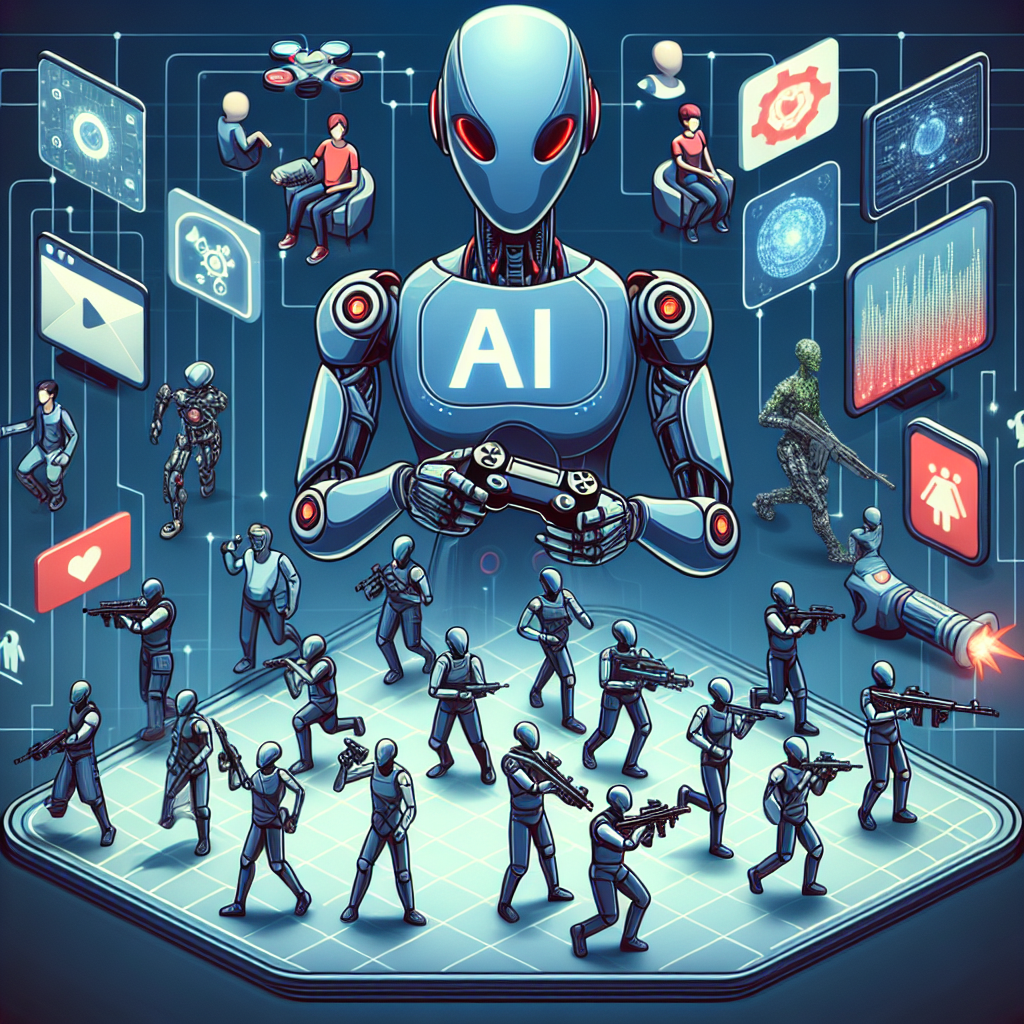In recent years, advancements in artificial intelligence (AI) technology have revolutionized the way game developers create and design characters in video games. AI-powered game characters are becoming more realistic and lifelike, thanks to the advanced algorithms and machine learning techniques that are being used to bring these avatars to life. In this article, we will explore the world of AI-powered game characters, how they are created, and the impact they are having on the gaming industry.
Creating Realistic Avatars with AI
One of the biggest challenges in game development has always been creating realistic and believable characters that players can connect with. Traditionally, game developers have relied on hand-crafted animations and pre-programmed behaviors to bring characters to life. However, with the advent of AI technology, developers now have the ability to create characters that can think and act on their own, making them more lifelike and dynamic.
AI-powered game characters are created using a combination of machine learning algorithms and data-driven techniques. Developers start by collecting vast amounts of data on human behavior, including things like facial expressions, body movements, and speech patterns. This data is then used to train AI models that can mimic these behaviors in real-time, allowing characters to react and respond to players in a more natural and realistic way.
One of the key advantages of using AI to create game characters is the ability to generate unique and personalized experiences for each player. By analyzing player behavior and preferences, AI-powered characters can adapt and evolve over time, creating a more immersive and engaging gaming experience. For example, a character might learn to anticipate a player’s moves in a fighting game, or develop a unique personality based on the player’s interactions.
AI-powered game characters can also help to reduce the workload for developers, allowing them to focus on more creative aspects of game design. By automating the process of creating and animating characters, developers can save time and resources, while also improving the overall quality of the game.
Impact on the Gaming Industry
The impact of AI-powered game characters on the gaming industry has been significant. With the rise of virtual reality and augmented reality technologies, players are demanding more realistic and immersive experiences, and AI-powered characters are helping to deliver on these expectations.
AI-powered characters have also opened up new possibilities for storytelling in games. By creating characters that can think and act on their own, developers can create more dynamic and engaging narratives, where players can interact with characters in a more meaningful way. This has led to a resurgence in narrative-driven games, where the focus is on character development and storytelling, rather than just gameplay mechanics.
In addition, AI-powered characters have the potential to revolutionize multiplayer gaming. By creating characters that can adapt and learn from each player’s behavior, developers can create more challenging and dynamic experiences for players, leading to more competitive and engaging gameplay.
FAQs
Q: How do AI-powered game characters differ from traditional game characters?
A: AI-powered game characters are created using machine learning algorithms and data-driven techniques, allowing them to think and act on their own. This makes them more realistic and dynamic than traditional game characters, which are typically pre-programmed with a set of behaviors.
Q: How are AI-powered game characters created?
A: AI-powered game characters are created by collecting data on human behavior and training AI models to mimic these behaviors. This data is used to generate animations and reactions in real-time, creating characters that can think and act on their own.
Q: What are some of the advantages of using AI-powered game characters?
A: Some of the advantages of using AI-powered game characters include creating more realistic and immersive gaming experiences, reducing the workload for developers, and opening up new possibilities for storytelling and multiplayer gaming.
Q: What are some potential drawbacks of using AI-powered game characters?
A: Some potential drawbacks of using AI-powered game characters include the risk of bias in the data used to train the AI models, as well as the potential for characters to behave unpredictably or in ways that are not intended by developers.
Q: How do AI-powered game characters impact player experiences?
A: AI-powered game characters can enhance player experiences by creating more personalized and dynamic interactions, adapting to player behavior, and creating more engaging narratives and gameplay experiences.
In conclusion, AI-powered game characters are changing the way games are created and played, with their ability to think and act on their own creating more immersive and engaging experiences for players. As AI technology continues to advance, we can expect to see even more realistic and lifelike characters in the games of the future, pushing the boundaries of what is possible in interactive entertainment.

